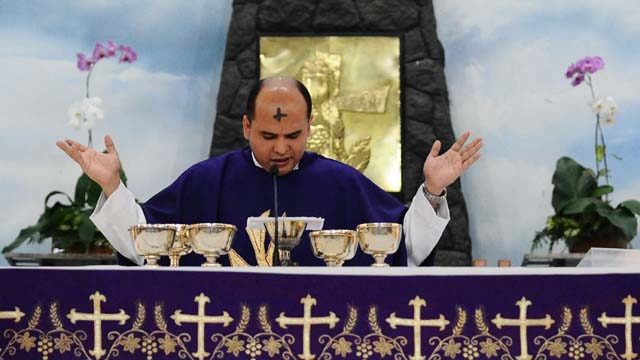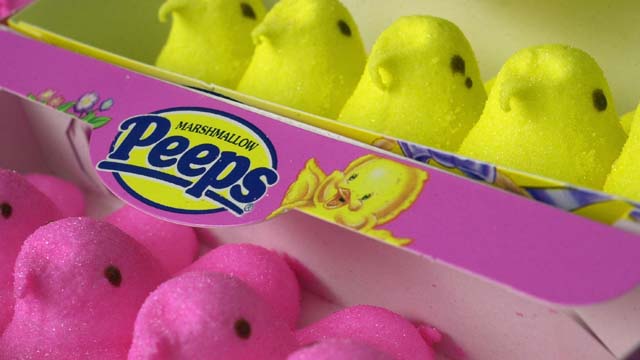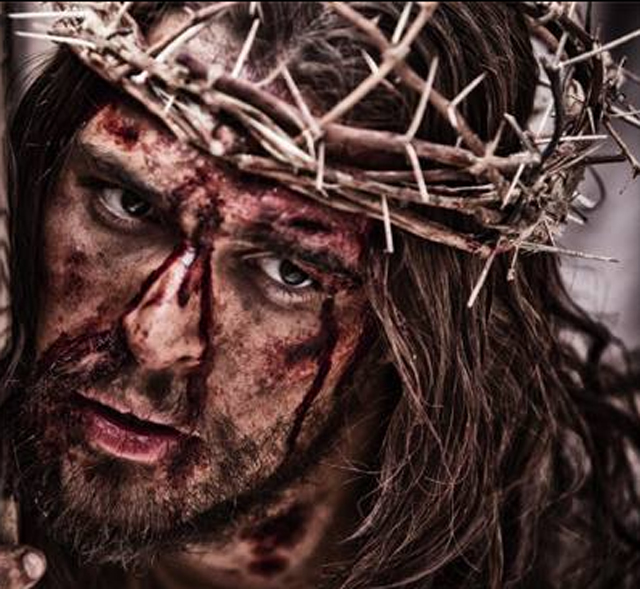
(Ash Wednesday ceremony in Surabaya, Indonesia. Getty)
Christians are observing the Lenten season, which falls during the 40 days before Easter. This time entails reflection, fasting and abstaining before Easter arrives on April 20, 2014. Here’s what you need to know about this important period of preparation in the Christian calendar.
1. It Starts on Ash Wednesday
Ash Wednesday selfie @PEORATORY @Pontifex . Blessed day too all! pic.twitter.com/qO1equ7Qic
— Prav Matthew Dana (@Pravy_D) March 5, 2014
Ash Wednesday marks the beginning of the Lenten season. Catholics get ashes drawn on their foreheads from a priest or a trained layperson. The ashes are to serve as a reminder of mortality.
There are three expressions that are said as the ashes are applied:
“Remember, O man, that you are dust, and unto dust you shall return.”
“Turn away from sin and be faithful to the Gospel.”
“Repent, and hear the good news.”
According to catholiceducation.org, since the earliest times, there has been evidence of Lenten preparation. However, Lent became more of an official celebration after the legalization of Christianity in 313 A.D.
2. It’s 40 Days Long & Ends on Easter

(Getty)
According to the Gospels of Matthew, Mark and Luke, Jesus fasted for 40 days in the dessert.
Lent is technically 46 days, including six Sundays. But Sundays, as the day of rest, are exempt from the restrictions and commitments of Lent.
Easter Sunday celebrates the resurrection of Jesus Christ on the third day after being crucified. It is considered the most important feast in the Christian calendar and will be celebrated on April 20 this year.
3. Catholics Abstain & Fast
Indulging one last time before Tsom(fasting for lent) begins pic.twitter.com/oxrJT7xweU
— makda (@makieee) February 24, 2014
Although Christians in the Anglican, Calvinism, Lutheran, Methodist traditions all observe the Lenten season, Roman Catholics have the most formal rules when it comes to abstaining.
The rules for fasting apply to Catholics between the ages of 18 and 59.
In addition, all Catholics 14 years old and older must refrain from the consumption of meat on Ash Wednesday, Good Friday and all the Fridays of Lent.
Although no meat is to be eaten, eggs, milk products or condiments made of animal fat are permissible.
American Catholic outlines what fasting entails:
Fasting as explained by the U.S. bishops means partaking of only one full meal. Some food (not equaling another full meal) is permitted at breakfast and around midday or in the evening—depending on when a person chooses to eat the main or full meal.
4. Good Friday & Holy Thursday Are Part of It

(Facebook)
Holy Week is the week before Easter and includes Holy Thursday and Good Friday.
Holy Thursday commemorates the Last Supper of Jesus Christ.
Many parishes celebrate that night with a washing of the feet ceremony. In the Gospel, it states that Jesus washed his disciples feet the day before he was crucified.
Good Friday is the most solemn holiday in the Christian calendar. Believers pay homage to the crucifixion of Christ as he was beaten and nailed to a cross.
There is to be no celebration of mass that Friday. Parishes do have a vigil that afternoon in accordance with the time of Jesus’ death.
5. Followers Have Been Responding on Social Media
Lent is a good time for sacrificing. Let us deny ourselves something every day to help others.
— Pope Francis (@Pontifex) March 5, 2014
Pope Francis tweeted the above message that believers should sacrifice and assist other during the Lenten journey.
Cardinal Timothy Dolan, the Archbishop of New York, has incorporated video reflections into his Lenten journey.
I hope you'll join me every day of Lent for a video reflection on this holy season at http://t.co/t6TyNRmsdO A blessed Ash Wednesday!
— Cardinal Dolan (@CardinalDolan) March 5, 2014
On Ash Wednesday, believers of all ages tweeted selfies with the hashtag, #ashtag, proudly displaying the ashes on their foreheads.